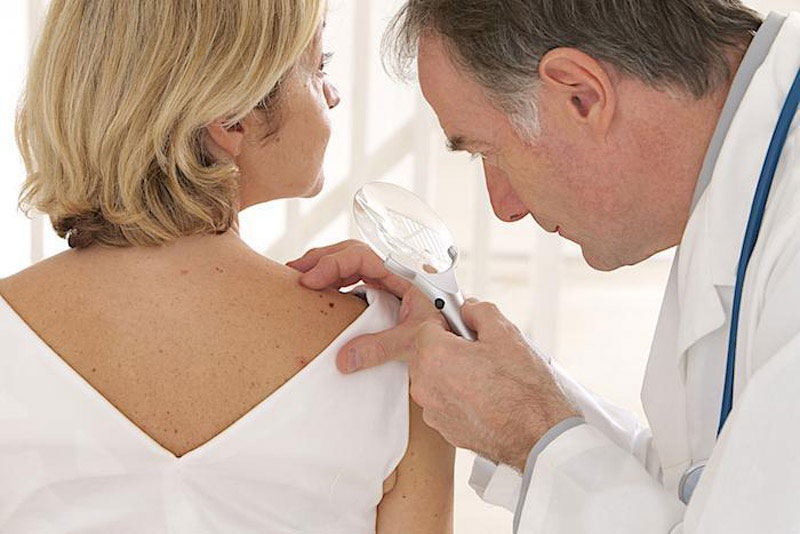Call Us
310-274-4401
Blog
Skin Cancer Screening: What to Expect During a Full-Body Skin Exam

Your skin is your body’s largest organ, and in many ways, it is your first line of defense against all sorts of problems. Healthy skin keeps bacteria out, prevents viruses, allows you to be wet or dry without problems, and protects you from the elements.
However, your skin is also susceptible to cancer. A full-body skin screening can detect the earliest signs of skin cancer.
At Rapaport Dermatology in Beverly Hills and Culver City, California, our expert provider, Dr. Vicki Rapaport, understands the importance of skin screenings, and they are highly trained and skilled in recognizing any signs of skin cancer.
If your screening reveals the need for further testing, they can guide you through that process with expertise and confidence.
What Is a Skin Cancer Screening?
Because we are talking about a full-body skin cancer screening, you need to change into a medical gown when you arrive for your appointment.
There are different parts of your exam, such as a family history discussion, going over any symptoms you are experiencing, the physical exam itself, and biopsies if the doctor feels they are necessary. After all of that, we discuss your next steps.
Family History Discussion
When it comes to skin cancer, your family history is important. If you have had melanoma yourself, or anyone in your family has had skin cancer, we need to know, because it can increase your risk.
If you have particular concerns about skin cancer, this section of your exam is an ideal time to bring them up. We are happy to answer your questions. If you have had bleeding or itchy lesions, we need to know, because those can be symptoms of skin cancer.
The Physical Exam
You can expect your doctor to look at your torso, arms, legs, your feet — including between your toes — your face, ears, and scalp during the exam. This is a visual examination, and your doctor is looking for suspicious lesions and certain moles.
Moles that are bigger than a pencil eraser, have irregular borders, are multicolored, or have changed since your last exam are of concern. During a mole check, your doctor is looking for irregularities that could indicate melanoma.
Besides moles, shiny purple areas or bleeding sores may be symptoms of skin cancer.
Your doctor may also use a specialized magnifying glass, called a dermatoscope, to see details of lesions or moles that are invisible to the naked eye. If necessary, your doctor can take a biopsy of the concerning area.
What Is a Biopsy?
If Dr. Rapaport sees anything that bears further investigation, they may suggest a biopsy — the removal of a small amount of tissue from the area of concern. This tissue is then analyzed, and depending on the results, you may need further treatment, such as cryotherapy, laser surgery, or Mohs micrographic surgery to remove more of the tissue.
What Comes Next?
Based on what they find during your exam, your doctor may recommend more frequent skin cancer screenings, or suggest regular, annual screenings.
If you have questions about our other services, or you have skin concerns that we have not discussed, this is a good point in your visit to bring them up.
Getting Ready for Your Screening
Preparing for a skin cancer screening is easy. The main thing to remember is that the doctor needs to be able to visually inspect all of your skin. Wearing your hair loose makes it easier to see your scalp, but long hair can make inspecting your neck and shoulders more difficult, so you may want to consider bringing a clip.
You might consider removing your nail polish on your fingers and toes so your nail bed can be examined. Skin cancer can affect your nails, too.
If you are concerned about your risk of skin cancer, schedule an appointment for your skin cancer screening today. The providers and staff at Rapaport Dermatology are happy to answer your questions and help you assess your risk.
